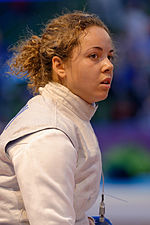| Happy Birthday : |

Fencing - Olympic Sports
![]()
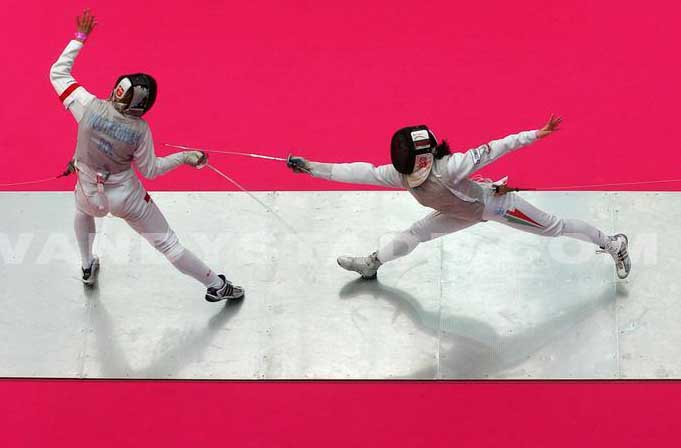
Two competitors compete and the winner is the one who, most of feints, cracks, parries and ripostes, marks the first number of keys needed for victory.
The motto of fencing: "I Do not unsheathed without reason, do not refrain me without honor."
The origins of fencing date back far into history and practice, initially mainly bound to struggle and later in a duel, has evolved to become today one of the sport.
The weapons held an important place in societies and cultures ancient Eastern. Throughout history, it is mentioned competitions after life-threatening, such as the Roman gladiator fights, tournaments of medieval nobility, dueling with swords.
Embossed carvings discovered in the temple Madinet-Habu in Luxor in Egypt, dating from 1190 BC, C, shows fencers in action. The swordplay was practiced as combat training by ancient civilizations such as Japan, China, Persia, Greece and Babylon. In Graeco-Roman warriors used swords and sharp short. In medieval knights wielded two-handed swords, broad and massive. The musketeers of Louis XIII played brilliantly in the rapier and dagger.
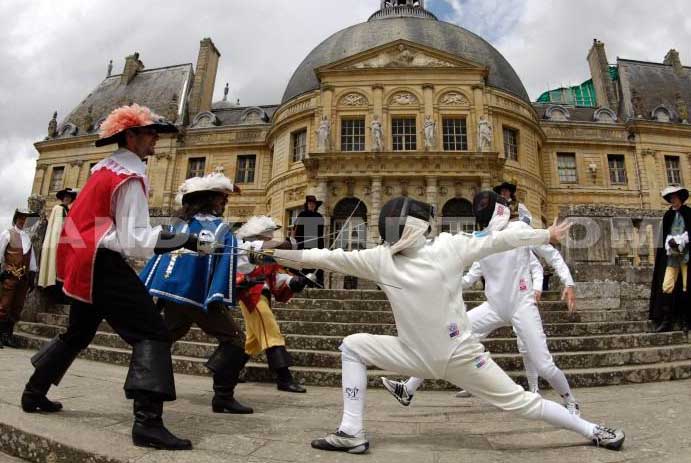
In Europe, modern fencing has emerged as a sport. The first guilds were founded in 1480 by German fencing masters, such as 'Marxbruder' Frankfurt. Henri Saint-Didier is the principal source of fencing movements that are still in force. Duels and sword fights, often fatal, were popular from 16th to 18th century weapons such as sticks, swords and swords. The French King Charles IX founded in 1567, the Academy of fencing masters. Also in France, the Ecole de Joinville, founded in 1872, training of fencers who attached themselves, not to give any duelists way to triumph on the field, but especially to teach a real sport , with courtesy and elegance. Besides the sword, advanced weapon, thrusting itself where the keys are valid on all parts of the body, we adopted the foil is also thrusting weapon, but conventional nature, where the way of bearing keys and reach the surface were paramount. Finally, the sword, using the blade (size) and advanced (thrusting), the traditional weapon of the Magyars, weapon fighting on horseback also appeared as the third sport and received employment limitations that made it a other conventional weapon. The rules and techniques have not changed much since its inception, except the introduction of a key signaling to electricity.
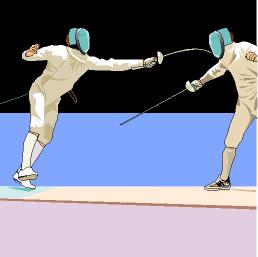
Thus in the fifteenth century are the first treatise published Fencing, word of German origin (schirmen "protect"), although in the romances of the Round Table, we give the "player of the sword" the name "escrimisseor" or "escrimisseur. In fact, modern fencing is born in Spain and, more specifically, to Toledo, a city famous for its manufacture of weapons. But thanks to the writings of the Italian masters, such Marozzo, Giganti and Agrippa, the sixteenth century and early seventeenth century, it acquired its present form. The French (Saint-Didier, Thibaust), in turn, in codifying the rules, greatly reducing the weight of arms, and that in 1653 the master of arms Besnard imagine the foil, thrusting weapon - advanced - harmless and mild. Under Louis XIV, the art of fencing is part of education. The French school can then compete with the Italian school, and the onslaught in public to allow shooters to show their full knowledge. An extreme courtesy is required. To avoid accidents, the tips of the foils are spotted and the late eighteenth century, the wearing of masks in lattice Boëssière invented by the father, becomes mandatory in the halls and assaults. The son Boëssière complement the work of codification, and four positions developed by Agrippa - the premium, the second, third, the fourth - he added the fifth and sixth. The masters Jean-Louis Lhomandie, The Faugere, Gonard, Grisier Cordelois and also contribute to the development of sport fencing, which, from 1880, composed of the foil, epee and saber in form current.
The French Fencing Federation was created in 1906 (60 677 graduates in 2006). It was in fact a change of name since it was founded in 1882 under the name "Society armory of France" became shortly after the "Company Incentive fencing" of recognized 'utilities December 10, 1891. The International Federation was founded in 1913 and has 108 member countries.The International Fencing Federation coordinates all major events: World Championships (established 1937), which takes place every year except Olympic years; European Championship (established 1921), Masters (established 1986) ; World Championships under 20 years (established 1950); World Championships Under 17 years (established 1987). Fencing has also the distinction of holding annual tournaments (or challenges) that bring together the best global practices: Challenge International de Paris, Coupe Giovannini, Martini Challenge (foil), Challenge Monal (sword), etc.. When all the fencing, language ad and arbitration is French. The tests are conducted in
iduellement and teams. We adopt for their organization or elimination by the hens or the knockout, or a combination of both. Hens playoff fight, usually in bouts of five buttons for men and women, while the final pool competes in bouts of ten buttons for men and eight keys for the ladies.
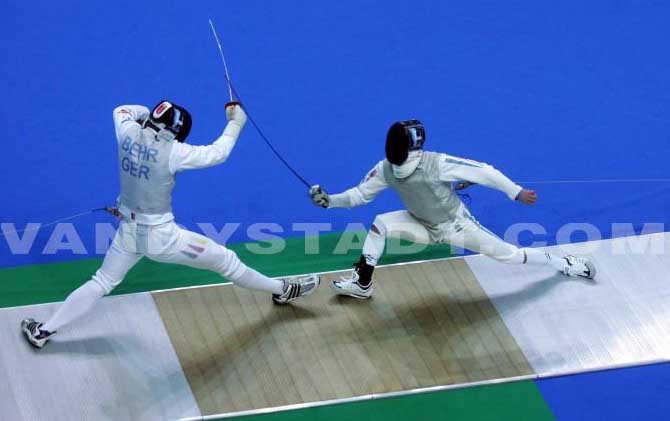
1921 First World Championship in epee won by Lucien Gaudin FRA
1922 First World Championship won by sword Adrianus De Jong NED
1926 First World Championship foil won by Giorgio ITA Chiavacci
1929 First World Championship of Women's Foil won by Helene Mayer ALL
1989 First World Championship of Women sword won by Anja Straub ALL
1999 First World Championship of Women's Saber won by Jelena Jemajeva AZE
Fencing and OlympismFencing is one of four sports have always been on the Olympic program. It is also one of the few disciplines in which fencers professionals, 'masters' can participate. The first Olympic competition of sword and dagger in 1896 and 1900 were also played by masters. There are tests in
iduelles and team (three fencers per team compete in a duel).
In 2008, men's foil and epee team ladies are no longer part of the Olympic program. Women's foil team for the first time, women's saber team will be included in the program.
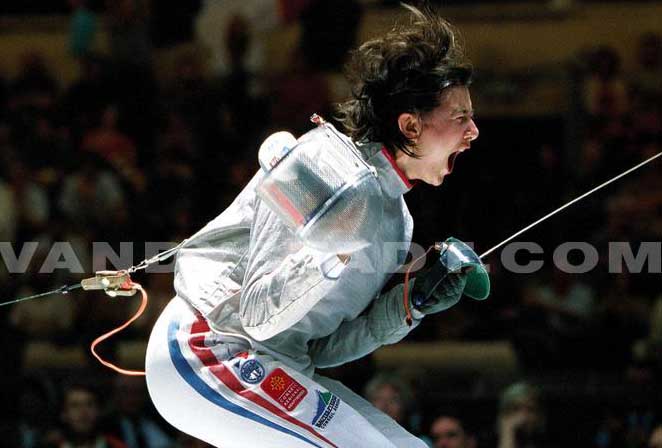
The introduction of weapons to OJ:
1896: the saber and foil men 1900: the sword men 1904: Men's Foil Team, 1908: men sword and saber team; 1924: Women's Foil, 1960: Women's Foil team (he has since disappeared from the program 2004), 1996: Women in sword
iduel and team; 2004 in Women's Saber
iduel
Namely:
- In 1896, the French Gravelotte Eugène-Henri (1876-1939) became the first fencer, who won Olympic Greek Ioannis Georgiadis , the first swordsman, Olympic champion.
- Women's fencing made its Olympic debut in 1924, Denmark's Ellen Osii won the foil event without losing a single assault.
The official language fencing is French. Introduction Electrical SystemIf the saber, arbitration is still done by a jury composed of a president and four assistants, he became electric sword (since 1934) and foil (since 1955). Competitors are connected to an overhead with a body wire, perfectly isolated, which is itself in contact with another wire passing through the leading blade and a tip-off spring; it triggers on the table, the ignition signal indicating the validity of the key to the condition that the surface is reached and regulatory pressure on the body of the opponent is at least 500 g in foil and 750 g at the sword. In saber, the moves are likely the tip or the edge.
PrincipleTwo competitors or compete in foil, either the sword or saber
Disciplines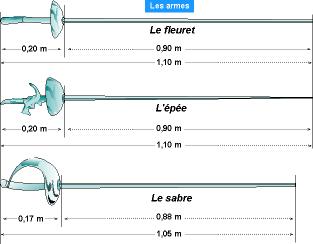
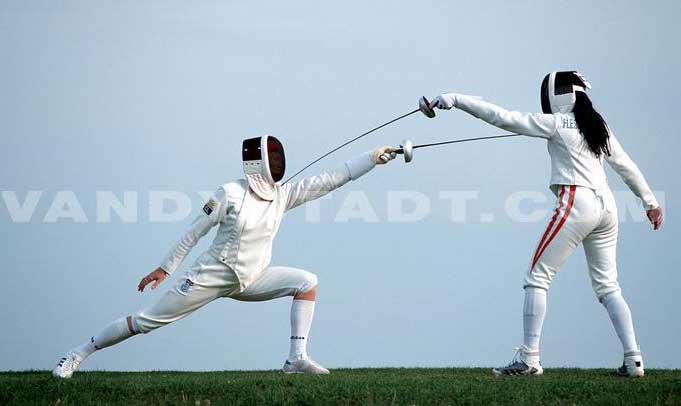
Weapon tip inspired dueling swords, the same length as a foil but heavier, with a larger guard and a stiffer blade.
- Weight: 750 g
- Maximum length: 110 cm
- Shell Diameter: 15 cm
- Target applies: whole body
- Ways to reach: Point
- Control keys: Electric since the 1936 Olympics.
The first to touch a body part of the opponent (including clothing and equipment) has a point. Hand, the tip of the helmet and the foot are often prized.
The foil :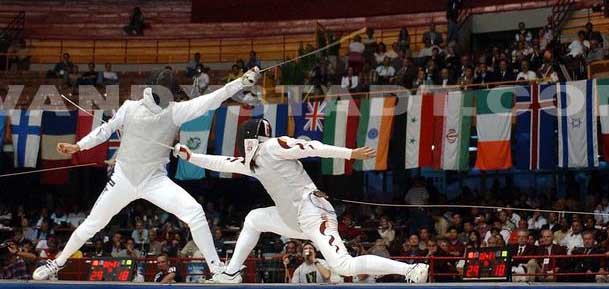
Advanced weapon and school with a flexible rectangular blade and a guard smaller than the sword.
- Weight: 500 g maximum
- Maximum length: 110 cm
- Shell Diameter: 11 cm
- Target holds: Trunk
- Ways to reach: Point
- Control keys: Electric since 1956.
The key is valid when worn with the tip of the foil over the area of the metal armor.
The sword :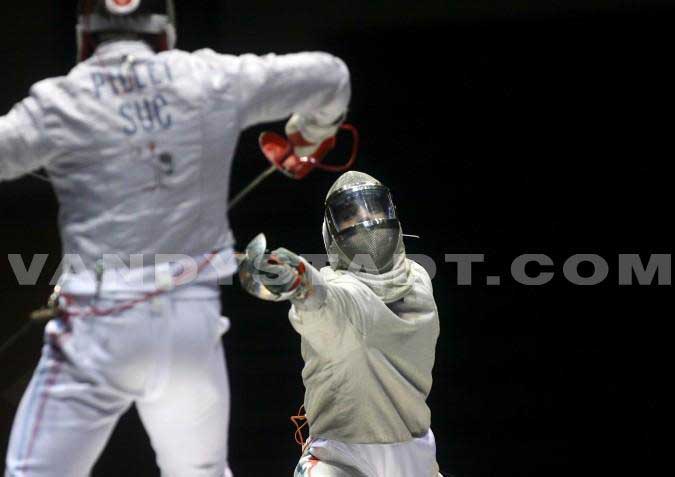
Advanced weapon and size after the cavalry sword slashing, same length and same weight as the foil but with a sharp blade, the tip can touch.
- Weight: 500 g maximum
- Maximum length: 1.05 cm.
- Shell Diameter: 14 cm - Target holds: bust and mask included
- Ways to reach: more art Blade
- Control keys: Electric since 1989. The button can be worn with the edge, the edge and back of the blade.
In fencing there are eight different defensive positions: prime (first), second, third (third), fourth (fourth), fifth (fifth), sixth (sixth), Septimus (seventh) and octave (eighth).
FacilitiesThe part of the field for combat called Runway. The runway is dirt, wood, linoleum, cork, rubber, plastic, metal, wire mesh or a metal-based material.
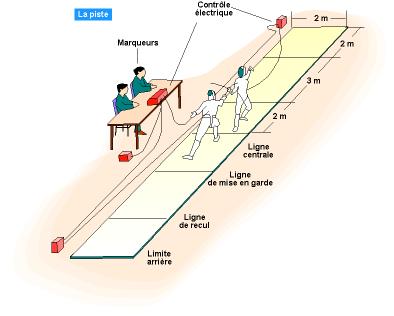
- The sword
The matches are held the sword in 5 keys for the gentlemen and ladies, with a duration of 6 minutes per game, single elimination, 15 keys for gentlemen and ladies. If, following a double blow, the two fencers reach the expected number of keys, they must play one or more additional keys to the limit of time allowed.
- The foil
In foil, matches are 5 keys for the gentlemen and ladies, with a duration of 6 minutes per game, single elimination, 15 keys for gentlemen and ladies.
- The sword
In saber, the matches are 5 keys for the gentlemen and ladies, with a duration of 6 minutes per game, single elimination, 15 keys for gentlemen and ladies
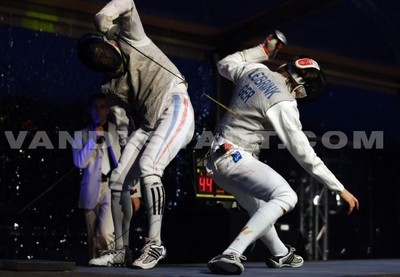
For foil and epee, positions are places that can take the hand of the shooter in 4 lines. These positions are at number 8. Consider that:
- Four are supinated (high): fourth, sixth, septime octave;
- Four are pronated (low): prime, second, third, fifth.
They gave their names to the parades. In saber, they are five in number: third, fourth, fifth, second premium.
Octave (FE) covering the position of the line outside the tip lower than the hand placed in supination.
Prime: (FE) position covering the lower lines, making the point lower than the palm downward, thumb underneath. (S) position or parade covering the left side, the point is lower than the hand, palm downward, thumb underneath edge facing left.
Quarter: (FE) covering the line position from within, covering the tip line from within the point higher than the hands, placed in supination. (S) position covering the left side, the point is higher than the hands, the blade facing left, above the thumb.
Quinte: (FE) covering the line position from within, taking into pronation, the highest peak of the hand. (S) position covering the head and shoulders, right hand, palm forward, the edge upwards, the blade is substantially horizontal.
Second: (FE) covering the position of the line outside, making the point lower than the hand placed in pronation.
(S) position covering the right side, making the point lower than the hand, palm downward, thumb left, the edge facing right.
Septimus: (FE) position covering the lower lines, the point is lower than the hand placed in supination. Septimius high or septime (see half-circle).
Sixtus: (FE) position covering the upper line, making the point higher than the hand placed in supination. The sixth guard is considered the sole custody.

Assault: Completeness of a combat between two fencers.
Attack: the initial offensive action executed by extending the arm and worn with a progressive movement (slot, arrow, etc..). It can be simple or compound, reinforced by actions on the blade.
Attack (compound): the attack is made when it includes one or more faints.
Attack (walking): should say "attack, lunge walk, or walk and arrow" (This expression comes from the brevity of some commands: one, two, walking, walking double, instead of fake release walking, mistaken cons).
Attack (the attack): Phrase used in the wrong place against attack.
Attack (false): simple or compound attack, incompletely developed, aimed at bringing the opponent to react to take advantage of his reactions.
Attack (single): offensive action, direct or indirect, executed in one time and coordinated with the slot or the arrow, or walking. It is direct when it is carried in the same line (forehand); indirect when it is given one line to another above or below the opponent's blade (cut, release).
Advanced: (ES) term that defines any part lying in front of the head and trunk (hand, forearm, etc..)
Borsody: (Saber) Hungarian master, creator of a defensive system even called the first system (third, fourth, fifth).
Yellow card: Card of the referee signifying a warning is given to a fencer violating a rule.
Carton black card the referee signifying a fencer expulsion.
Red Card: Map of the referee signifying a key penalty against a fencer for a rules infringement.
Caver: attack, fight back, attack-cons in cavant is wearing an offensive or offensive-cons with exaggerated movement of the hand in the line where the action ends (from the Latin "cavus" hollow).
Cons: parade where the tip describes a circular motion to reduce the opponent's blade in the opposite line to the offensive line.
Shell: metal part and convex circular to protect the hand.
Melee: Movement involving bodily contact, where two fencers are engaged so that none of them can use his weapon.
Cleared: single offensive action, which is to leave the line where it is to touch another. From the high line, the release is underneath the opponent's blade, from the low line, above.
Half circle (FE) the half-circle or septime high or septime, a parade is semi-circular, has taken custody of sixth (or third), the opponent's blade back up.
Double (once): it is said "double shot" (formerly blow for blow or sudden thrust), when both fencers touch together. They are, in foil and saber, separating the implementation of conventions. A sword, they are both declared "affected".
Thrusting: an ancient term referring to a blow from the tip of the weapon (sword or foil).
Dodge: how to avoid a coup by a rapid movement of the body.
Guard: Part perpendicular to a sword between the blade and the handle which protects the hand in combat, also called "shell".
Warning line: line located two feet inside the back line warning fencer he approaches the end of the runway.
Care Line: Line on each side of the median line where a fencer stands to begin or resume an attack.
Line median line crossing the track or playground, the
izer into two halves.
Parade: defensive action in which a fencer blocks the opponent's blade. Defensive action in which a fencer blocks the opponent's blade.
Penalty a yard penalty under which the action is moved one meter ahead on the track for the attacker before the resumption of a storm.
Breastplate: Protective clothing worn under the jacket of a fencer.
Tip: Tip of the blade, which must reach the target area of the opponent to a point.
Bonus: The first of eight defensive positions in fencing.
Priority Rule established to eliminate virtually all attack simultaneously between two fencers in foil and saber, after which the arbitrator is authorized to determine who attacked at a time and thus benefiting from the "priority" to score a point.
Repetition: Attacking an opponent a second time after it missed its cons-attack.
Discount: New attack immediately after the opponent has blocked an initial attack.
Resumption of care: Replacement in guard position after a lunge.
Riposte: Counter-attack on a fencer who has just blocked an attack from his opponent.
Santelli: (S) Italian master who taught in Hungary, creator of a defensive system called 2nd (second bonus fifth).
Simple: Refers to an action in one motion, as in an attack or a response involving a single movement.
Simultaneous: Rule that there is no key when two fencers in foil and saber are touching at the same time during an attack, a repetition or a discount.
Button: Point marked by a button with the tip of the blade of a sword or a foil or the edge of the sword blade on a body part of the adversary part of the target.
Button (Perform): Hitting the tip of the weapon or cut with the blade of the sword, and score a point.
Key penalty: key given to a fencer when the opponent after a warning, commits a serious fault.
Copyright Sportquick/Promedi




.jpg)
(7).jpg)
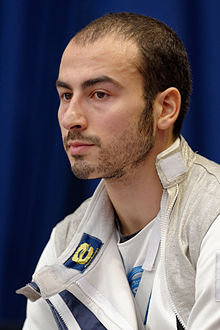
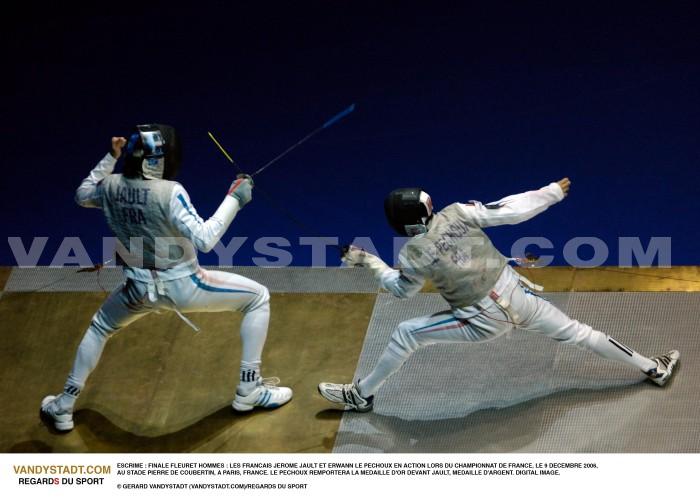
(17).jpg)
(18).jpg)
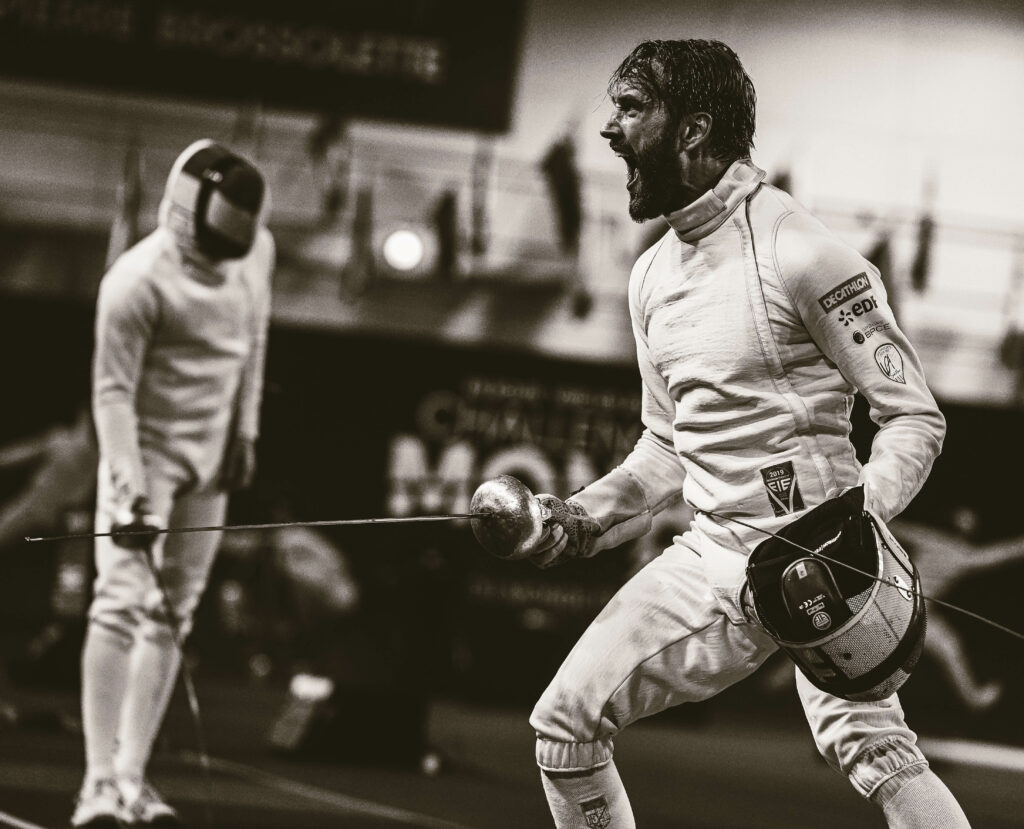
.png)
